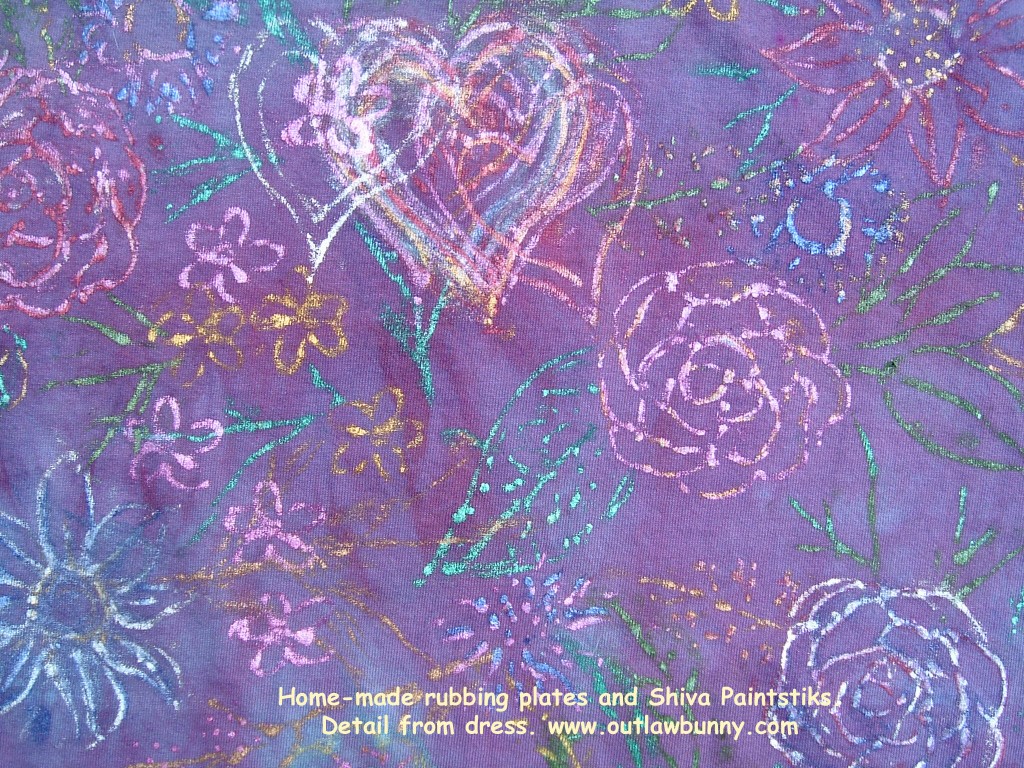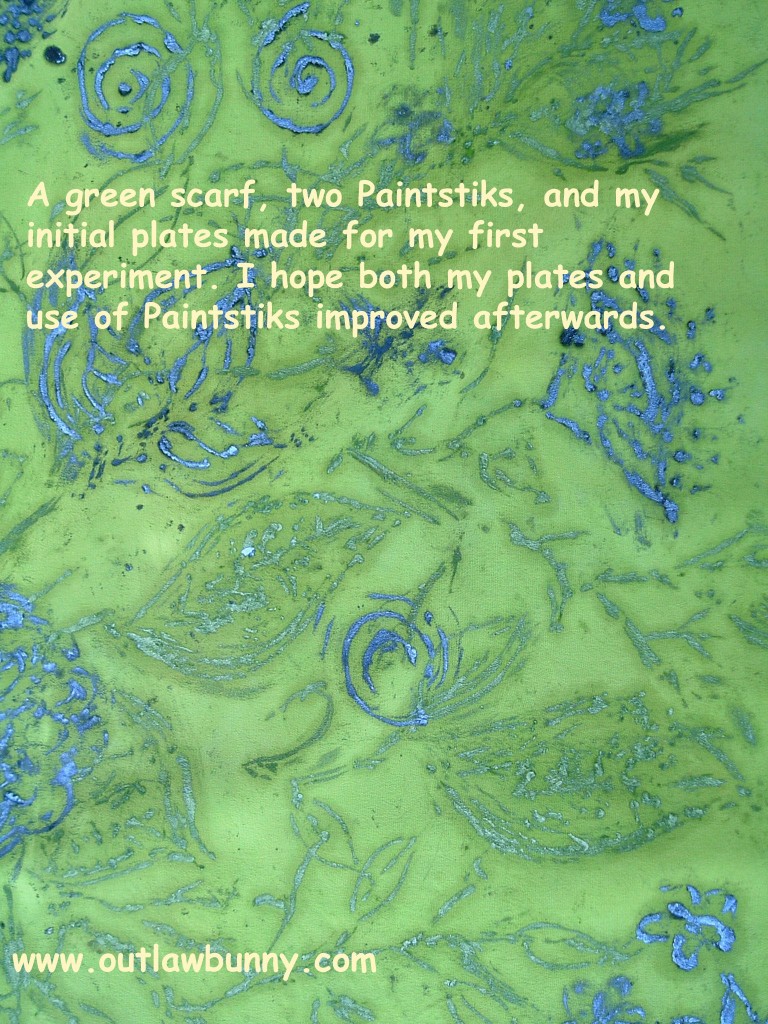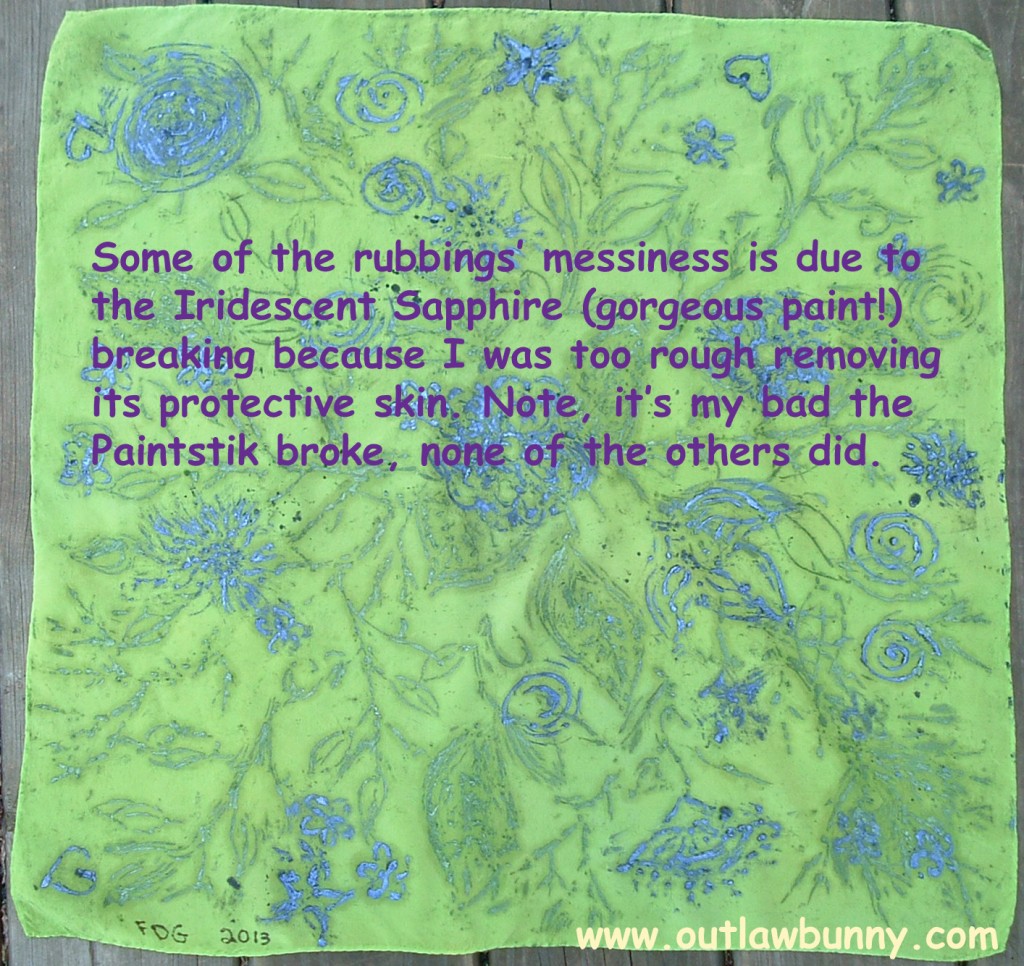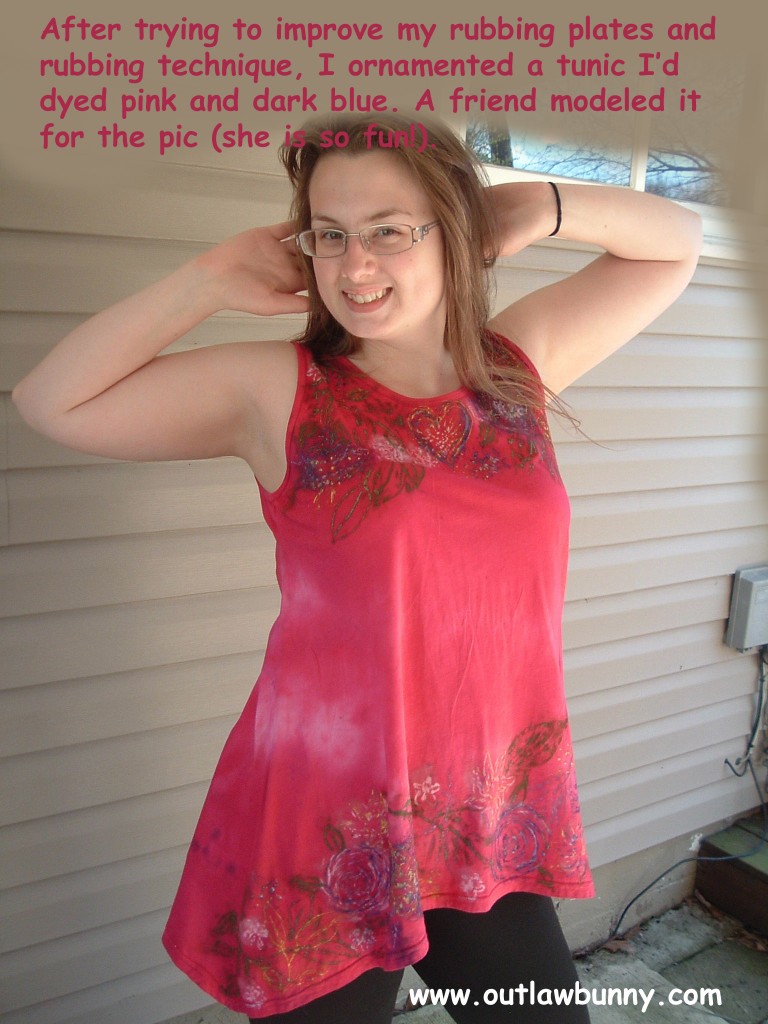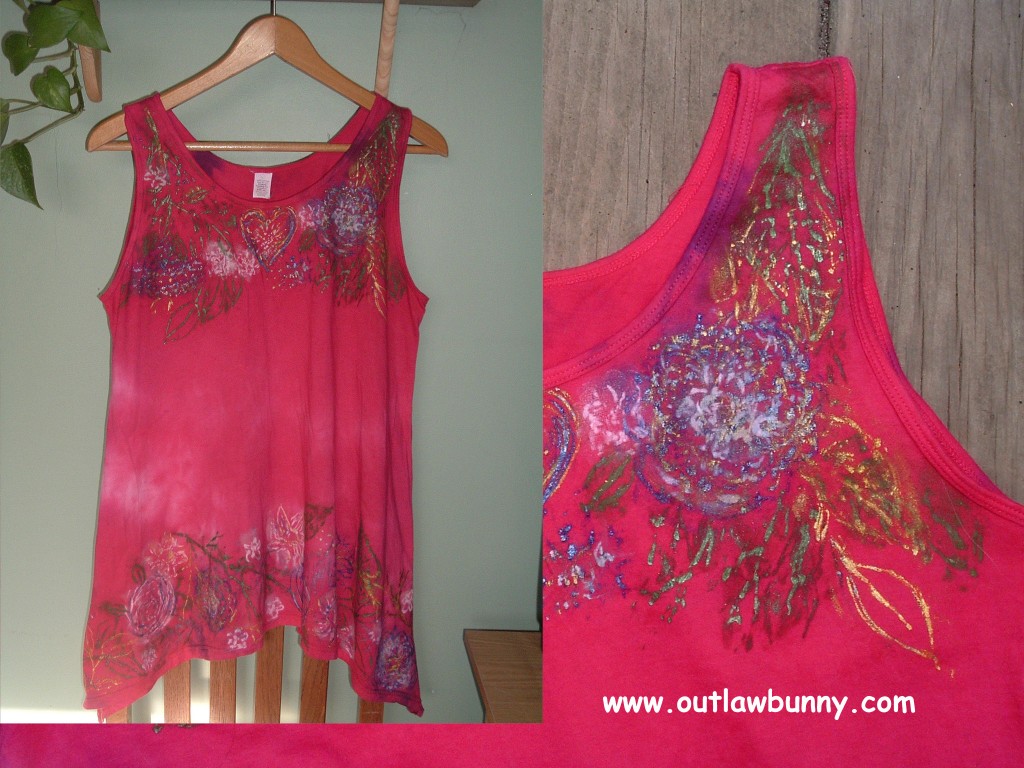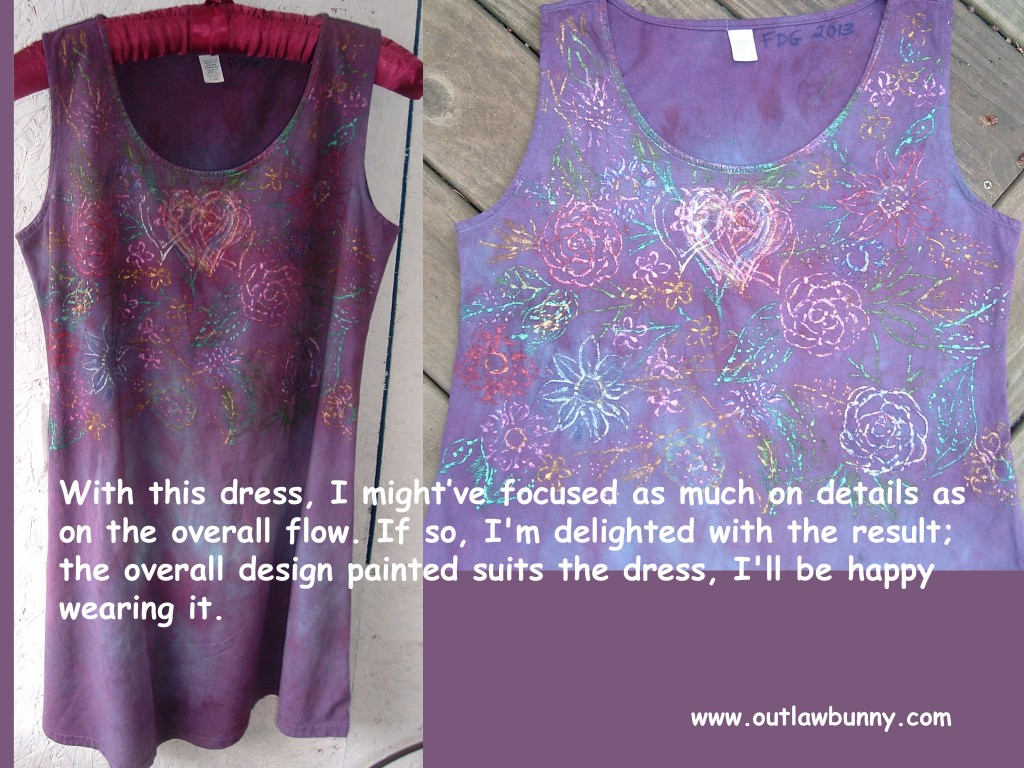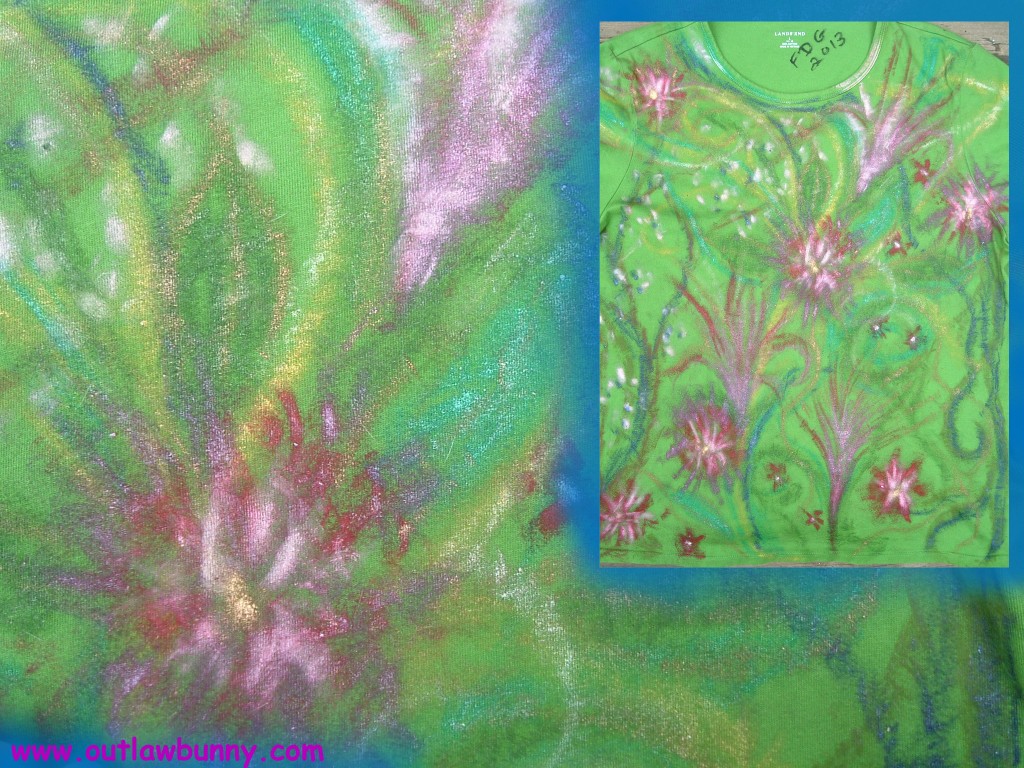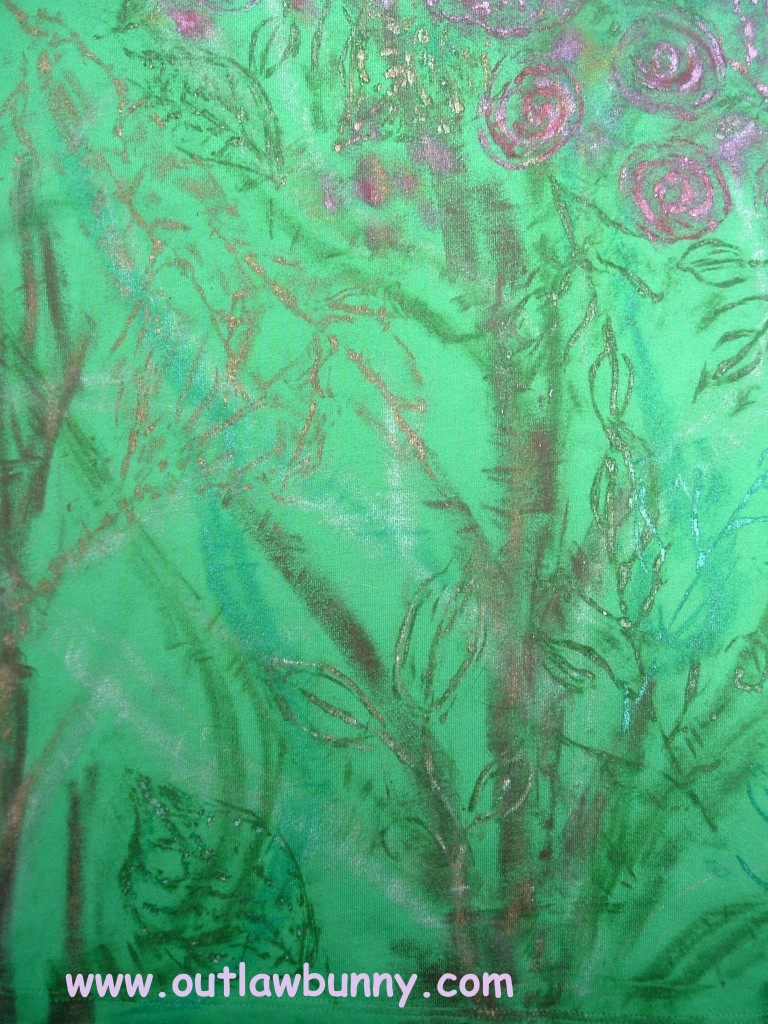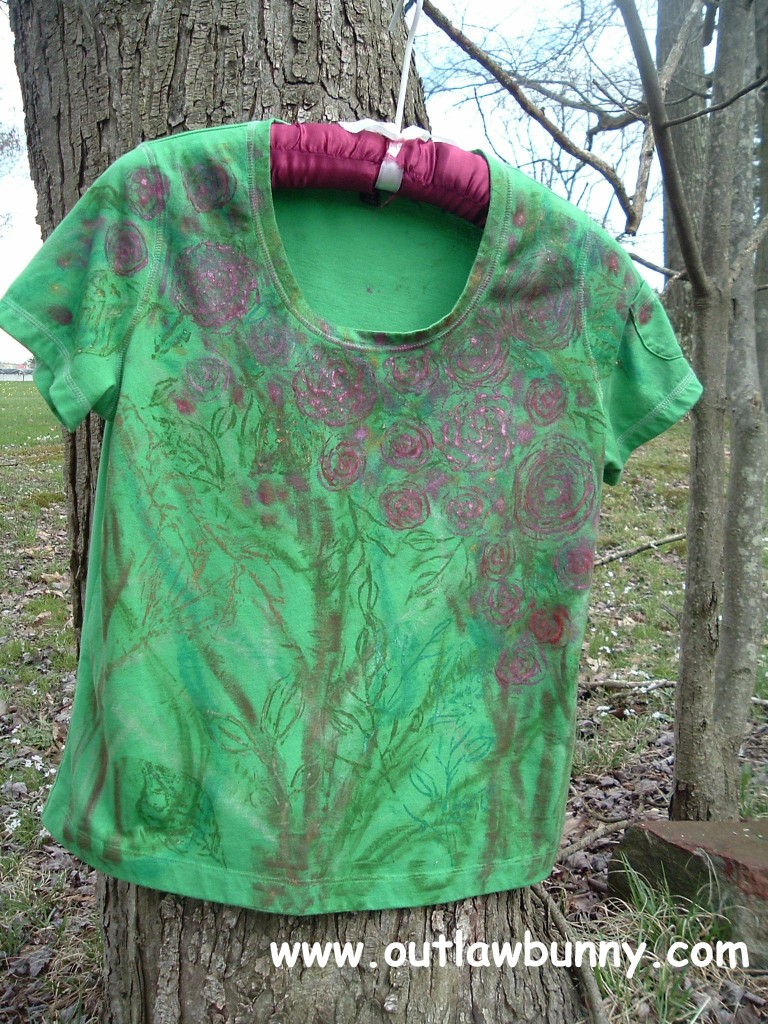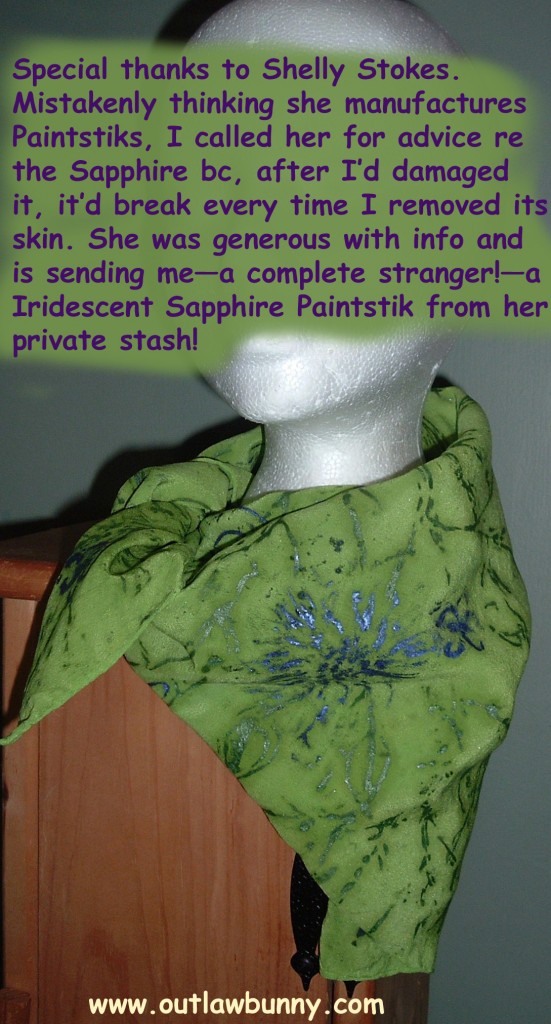My first attempts at oil-painting deeply touched me, so I want to share my experience with you.
Shiva Iridescent Paintstiks sounded perfect for my fabric-painting. I also loved that they could be used for rubbings. (You know how rubbing a pencil over paper that’s held against a tombstone makes an impression on the paper?)
Precise, detailed fabric painting is my focus and I love it, but it doesn’t suit all my needs. More than once, I’ve spent a week making a very detailed scarf then, once it’s folded to wear, it doesn’t look good because all my labor-intensive painting is hidden in the folds. (I framed some of those scarfs, so all was not lost.) It is even more disconcerting if you realize that my painting is one-of-a-kind, so there’s goodly additional time spent creating a design for each piece. The past couple of years, I’ve bit by bit learned to paint better scarfs, but only recently felt successful.
Rubbings with Shiva Paintstiks seemed another way to give a scarf a sweep of design that worked in folded fabric. For example, I wanted a general impression of a garden, instead of floral details no one would see. (Heh, pun about rubbings: “Impression,” get it?)
I set about trying to design and construct rubbing plates. (If you want a DIY rubbing plates tutorial, lemme know, I have a lot of tips, because I became obsessed about making plates.)
My homemade plates consist of thick 3-D lines, made with Jones Tones metallic fabric paint, on old CDs and CD cases. (I’m a genius!) There was lots of trial ‘n’ error: I made 40 plates, tossed ten, and had to salvage many of the remaining ones by redoing them. (Yes, I got obsessed.)
Also, it also took a bit of practice to learn how to actually do a rubbing, but the process was fun.
Conventional wisdom tells us to look at other people’s designs for ideas. I avoid that, fearing it will cloud my mind so I can’t see my own visions. Also, if I subconsciously translate other people’s work as “the right approach,” I won’t recognize my own style. So I researched technical use of Shiva Paintstiks (such as colorfastness, and how to set the paint), but avoided seeing people’s actual rubbings, except when part of a technical article or vid.
Point is, I don’t know how my rubbings compare with ones made on professionally made plates. I imagine mine are messier and more primitive. But I need my own style. And the rubbings made clothes I’ll love wearing…hmm, I guess that says it all, I guess I like my rubbing plates, LOL!
The next thing I tried was using Paintstiks directly, no plates. I like the result but, at first, did not and didn’t care, bc the sheer process of painting directly with Paintstiks was a joy joy joy. See next three pics:
Then, I used Paintstiks directly on another unloved Tee, after which I made rubbing plate impressions over that. I don’t know what I think of the outcome. See below. Feedback?
I have mixed feelings about my Paintstiks experiments, which spanned several weeks, because I’m unsure where to go next. The rest of this post are my thoughts about that.
Sometimes the results of your efforts do not matter, if the process is enjoyable and helps your creativity grow.
I’ll continue with Shiva Paintstiks because, whatever the end result, the process of using them thrills me on a visceral level.
Making my own rubbing plates, and the specific way I’m using them (more about that, next paragraph) are possibly as labor-intensive as painting directly on the fabric to make one of a kind pieces. But labor-intensive can be worth it.
Most of the time, I might be using my plates eccentrically. Usually, I’ve seen rubbing plates employed to texture small fabric pieces that become a quilt patch. I don’t quilt, and do not need textured cloth or small pictures on small fabric pieces. Primarily a painter, I want a large OOAK picture that is a composite of rubbings, e.g. a floral landscape in which each flower, leaf, or branch is placed precisely. Also, I mostly used the plates on large areas of assembled clothing, which was difficult.
Though I’m bringing my usual precision into the process, the messiness of my own rubbing plates frees me up. And I like how the messiness, sweep, and meticulous combine.
As I said, my work prior to this tended to be calligraphic: sharply-defined, ornate lines. I’m not letting go of that or the paints best suited to it. Oil paint creates a whole different look. Time and practice will improve my skill with it, and tell how to best use it to express me. For one thing, messiness might be part and parcel of the approach I am exploring, but it is maybe too messy.
Thanks for sharing my first efforts using Paintstiks. I would love to hear about your own experiments. One last pic:
Mea culpa! The manufacturer is Jack Richeson.
